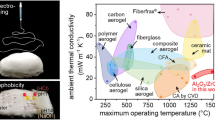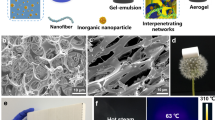The effect of nanosize alumina (Al2O3) concentration on the morphology and mechanical properties of microfibrillar composites obtained by processing the thermodynamically incompatible polypropylene/ copolyamide (PP/CPA) blend was studied. It was established that composite monofilaments exhibited a selfreinforcing effect due to the in situ formation of PP fibrils (microfibers) in the CPA matrix. The tensile strength and the initial elastic modulus of the filaments studied depended on their structure and correlated with dimensional characteristics of the disperse phase component. It is shown that the introduction of Al2O3 nanoparticles in an amount of (0.1-3.0) wt.% allows one to adjust the structure formation process of the dispersed phase component to obtain composites with a thin homogeneous morphology. The maximum performance was achieved for filaments formed from a composition containing 1.0 wt.% alumina. In this case, microfibers were the predominant type of structure, and their diameters were minimum. The increasing ability of the jets of nanofilled melts of PP/CPA blends to the longitudinal deformation was due to the formation of a more perfect microfibrillar structure during extrusion. This makes it possible to obtain filaments from such blends on already existing extrusion equipment.






Similar content being viewed by others
References
L. A. Utraсki and C. A. Wilkie, Polymer blends handbook, London: Springer New York; Heidelberg Dordrecht (2014).
N. Miskolczi, V. Sedlarik, P. Kucharczyk, and E. Riegel, “Enhancement of the mechanical properties of a polylactic acid/flax fiber biocomposite by WPU, WPU/starch, and TPS polyurethanes using coupling additives,” Mech. Compos. Mater., 53, No. 6, 791-800 (2018).
S. Thomas, R. Mishra, and N. Kalarikka, Micro and Nano Fibrillar Composites (MFCs and NFCs) from Polymer Blends, Woodhead Publishing (2017).
M. V. Tsebrenko, A. V. Yudin, T. I. Ablazova, and G. V. Vinogradov, “Mechanism of fibrillation in the flow of molten polymer mixtures,” Polymer, 17, No. 9, 831-834 (1976).
R. J. Shields, D. Bhattacharyya, and S. Fakirov, “Fibrillar polymer-polymer composites: morphology, properties and applications,” J. Mater. Sci., No. 43, 6758-6770 (2008).
K. Jayanarayanan, S. Thomas, and K. Joseph, “Morphology, static and dynamic mechanical properties in situ microfibrillar composites on polypropylene/poly (ethylene terephtalate) blends,” Composites: Part A, No. 39, 164-175 (2008).
R. J. Shields, D. Bhattacharyya, and S. Fakirov, “Oxygen permeability analysis of microfibrill reinforced composites from PE/PET blends,” Composites: Part A, No. 39, 940-949 (2008).
Vu Anh Doan and Masayuki Yamaguchi, “Interphase transfer of nanofillers and functional liquid between immiscible polymer pairs,” Recent Res. Devel. Mat. Sci., No. 10, 59-88 (2013).
B. Andricic, T. Kovacic, and I. Klaric, “Properties of recycled material containing poly (vinyl chloride), polypropylene, and calcium carbonate nanofiller,” Polym. Eng. Sci., 48, No. 3, 572-577 (2008).
R. Chen, S. Ahmad, S. Gan, M. H. Ab Ghani, and M. N. Salleh, “Effects of compatibilizer, compounding method, extrusion parameters, and nanofiller loading in clay-reinforced recycled HDPE/PET Nanocomposites,” Appl. Polym. Sci., 132, No. 29, 319-325 (2015).
J. J. Elmendorp and A. K. Van Der Vegt, “A study on polymer blending microrheology: Part IV. The influence of coalescence on blend morphology origination,” Polym. Eng. Sci., 26, No. 19, 1332-1338 (1986).
N. M. Rezanova, Yu. O. Budash, and V. P. Plavan, Innovative Technologies of Chemical Fibers [in Ukrainian], K. KNUTD (2017).
W. Li, J. Karger-Koсsis, and A. K. Schlarb, “Dispersion of TiO2 particles in PET/PP/TiO2 and PET/PP/PP-g-MA/TiO2 composites prepared with different blending procedure,” Macromol. Mater. Eng., No. 294, 582-589 (2009).
N. M. Rezanova, V. G. Rezanova, V. P. Plavan, and O. O. Viltsaniuk, “The influence of nano-additives on the formation of matrix-fibrillar structure in the polymer mixture melts and on the properties of complex threads,” Vlakna a Textil, No. 2, 37-42 (2017).
N. Rezanova, Yu. Budash, V. Plavan, O. Ishchenko, and V. Bulakh, “Morphology and rheology of nanofilled РР/PVA blends,” Revista de Materiale Plastice, No. 4, 735-739 (2017).
N. H. Tran, H. Brünig, M. A. Landwehr, R. Vogel, and G. Heinrich, “Controlling micro-and nanofibrillar morphology of polymer blends in low-speed melt spinning process. Part II: Influences of extrusion rate on morphological changes of PLA/PVA through a capillary die,” J. Appl. Polym. Sci., No. 133, 442-573 (2016).
N. H. Tran, H. Brünig, R. Boldt, G. Heinrich, “Morphology development from rod-like to nanofibrillar structures of dispersed poly (lactic acid) phase in a binary blend with poly (vinyl alcohol) matrix along the spinline,” Polymer, 55, No. 24, 6354-6363 (2014).
M. Salzano de Luna and G. Filippone, “Effects of nanoparticles on the morphology of immiscible polymer blends - challenges and opportunities,” Eur. Polym. J., No. 79, 198-218 (2016).
A. E. Zaikin and T.B. Bobrov, “Compatibilization of mixtures of incompatible polymers by filling,” Vysokomol. Soed., 54, No. 8, 1275-1282 (2012).
Author information
Authors and Affiliations
Corresponding author
Additional information
Translated from Mekhanika Kompozitnykh Materialov, Vol. 56, No. 3, pp. 479-492, May-June, 2020.
Rights and permissions
About this article
Cite this article
Plavan, V.P., Rezanova, V.G., Budash, Y.O. et al. Influence of Aluminum Oxide Nanoparticles on Formation of the Structure and Mechanical Properties of Microfibrillar Composites. Mech Compos Mater 56, 319–328 (2020). https://doi.org/10.1007/s11029-020-09883-5
Received:
Revised:
Published:
Issue Date:
DOI: https://doi.org/10.1007/s11029-020-09883-5




